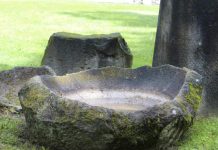The size of the great grey shrike is about 24-25 cm in length. It is one of largest and most widespread shrike of the European region. All races show grey upper parts, lacking any brown or rufous tones in plumage, and have a prominent black mask (not extending over the forehead, or, in some races, very closely) and black and white wings and tail.
These features are shared only by Lesser Gray, but Great Grey has a more rotund body, longer tail, slimmer bill, and much shorter primary projection than Lesser Gray. A number of races inhabit our region, varying in intensity of the color of both upperparts and underparts and in the extent of white patches in wings, some of which suggest Lesser Gray in wing pattern and body coloration.
The bird sits on very exposed perches, more often than not in a more hunched, less vertical, posture than Lesser Grey, and is often mobbed by smaller birds. Great Gray Shrike preys on small birds more than any other shrike.

Sexes are similar, though males are usually more contrastingly marked than females, the latter having weak barring on the breast. Juvenile has browner upperparts and weak vermiculations on upperparts and underparts (but this is racially variable); 1st-winter birds in autumn are much like an adult female, although they retain some weak barring on breast/flanks and pale edges to greater coverts of juvenile plumage.
Great Gray Shrike calls include a ringing ‘shreee’ and a nasal ‘shack’, the latter often repeated in a Common Magpie-like chatter. Great Gray Shrike song is a varied collection of squeaks, trills, and chattering phrases. Recent studies suggest southern (meridionalis) group of races merit specific status under the name Southern Gray Shrike.
Rather marked, eight races (nominate meridionalis, algeriensis and elegans illustrated). Fall into two groups. Excubitor group (Great Grey Shrike): Light to medium grey upperparts, very pale grey to whitish underparts, white in the wing at bases of primaries less extensive than in Lesser Gray.
These races intergrade. Nominate race (Northern and Central Europe, wintering south to northern shores of the Mediterranean and the Black Sea): medium gray upper parts, almost white below, small white patch at base of primaries (some also on secondaries). Race homeyeri (steppes from Bulgaria and Romania eastwards, wintering south to Caucasus): paler gray above and whiter below than nominate race, with whiter forehead and supercilium and with small white bands at bases of both primaries and secondaries.

Meridionalis group (Southern Grey Shrike, western races): Dark gray upperparts, underparts distinctly grey, white in wingless extensive than in Lesser Gray.
Race meridionalis (Iberia and S France): slate-gray above, paler gray (washed pinkish) below, with narrow, short whitish supercilium above lore. Race algeriensis (NW Africa north of the desert): slightly paler above and below than meridionalis, clearer gray below, practically no white above mask or on the forehead, bill slightly stouter.
Race koenigi (Canary Is): resembles algeriensis, but has short whitish supercilium above lore. Meridionalis group (Southern Grey Shrike, eastern races): Light gray above, almost white below, and with widespread white in wings (more so than in Lesser Gray).
Race elegans (northern edge of Sahara, from Mauritania east to Sinai): paler grey above than algeriensis and almost white below, with extensive white on scapulars, wings, and sides of the tail, and sometimes a very narrow black band across forehead; intergrades with algeriensis in Tunisia and with aucheri in Sinai.
Race aucheri (Middle East, intergrading with elegans in Sinai): rather darker above and more grayish-white below than elegans, with a narrow black band on the forehead at the base of the bill, and white in wings and tail more restricted. Race pallidirostris (breeding in Central Asian deserts, wintering in the Middle East) is sometimes given specific status under the name Steppe Grey Shrike: differs from aucheri in having dusky (not black) lores, pale brownish (not black) bill, and buffish-pink wash on underparts.
Great Gray Shrike is common in the south but rather uncommon in the north. (In addition to mapping the range, formerly bred Switzerland.) The open country of different kinds, from semi-desert to farmland and from heaths and bogs to partly forested tundra, with scattered trees, bushes, or scrub.







